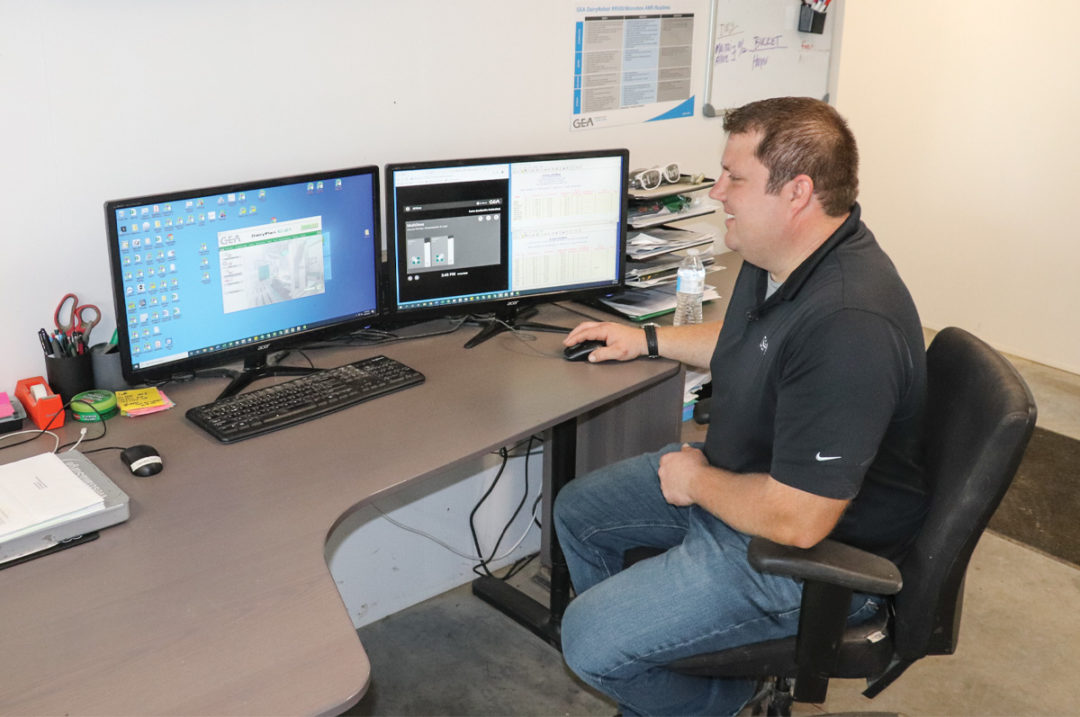Sorting the mail, eating lunch, scrolling through Facebook – these daily events can take about 15 minutes. And that’s all it takes to perform a few key assessments to help ensure your milking robot is operating at the highest level. Spending 15 minutes every day can push your cow and robot performance from average to excellent. By investing time proactively, you can pinpoint potential issues before they become something bigger – and take more time, labor and money to resolve.
No matter your dairy’s performance indicators – pounds of milk, total box visits, total milk from the box or increasing feed intake at the robot – optimal robot system performance is key to achieving your goals. Monitoring the right metrics and adjusting as needed will keep your system and cows performing.
Achieving peak performance
Incorporating maintenance and monitoring in your day-to-day routine will keep operating costs in check. Keep a checklist of daily, weekly and monthly tasks.
Here are examples of daily robot tasks:
- Clean robots, milk rack and cluster with spray water.
- Clean camera using approved methods and products.
- Review equipment performance reports.
- Watch a couple cow milkings and be sure cups are attaching and removing properly.
- Ensure hoses are in place and properly aligned.
- Ensure air nozzles on each quarter are clean and cups are properly aligned in clean-in-place position.
- Check robot arm movement in and out of its home position and underneath the cow.
- Listen for feed dispensing during milking.
Breaking down tasks into categories of robot, milking, barn and computer will help you focus on each key area.
It can be easy to get complacent with standard operation and not take extra time to assess your robot. But as robotic milking systems mature, it’s wise to look at them through different lenses to optimize performance and keep the cost of ownership low.
When it comes to monitoring equipment performance, consider: Where was performance a month ago? Three months ago? Six months ago? You might not notice changes day to day, but you can pinpoint when you started to drift if you look back over a longer period. Keep track of the service shifts and what needs to be done to minimize the time spent working on your robots during busier seasons on the farm, such as with fieldwork.
Review robot utilization compared to how your cows are performing. If you don’t set aside time to review this data, it’s easy to think everything is fine. For example, when it comes to fresh cows – are they taking an extra week or two to get going? Are you giving up milkings at a certain time of day? Could you adjust the feed pusher, scraper or barn routine to make better use of the robot’s time? Pair the data with the management tasks – whether they’re automated or done by a person.
Digging into the data
The robot does a good job of alerting you to most things, but sometimes as a manager, you have to match one or two alerts to know there may be an issue with your robot or an individual cow. You can get ahead of cow health issues by investigating and troubleshooting the little things – a slight flutter on the activity monitor, a drop in milk or a spike in conductivity. Anything you can do to facilitate preventative treatment instead of being reactive helps avoid having to fix a serious issue.
Use all the dairy data available to you beyond the robot. Consider:
- Herd management software (i.e., DairyComp, PCDart, DairyPlan, BoviSync, DHI-Plus)
- Activity and rumination monitoring insights
- Milk processor information – milk quality and components
- Animal health data – fresh and sick cows
- Milk testing results
These additional sources of information are key to building connections between cow and robot performance. By connecting the two, you can relate the results to service work you performed on the robot or a cow issue you had to treat. Eventually, you’ll experience “aha” moments and realize, “Hey, I can use this report to identify a specific challenge.”
The more you see the shape of the graph on activity monitoring or rumination and how it ties to the rest of the data, you’ll get good at knowing what it’s telling you from the data alone. Once you’re familiar with it, the patterns will look similar, and you can quickly recognize what’s happening.
Taking time to discover and investigate the little things every day can pay off in system and cow performance. Develop a solid monitoring routine by working with your robotic milking equipment dealer.
KEY TAKEAWAYS
- Spend time daily at the computer digging into the data and reports.
- Pay attention to anything deviating from normal – noises, a gate closing slower than normal or an arm extending differently than usual.
- Keep track of the little things that seem off in a notebook or in your cellphone.
- Don’t forget about being a cow person – the robot doesn’t replace everything you’ve learned about managing cows.





